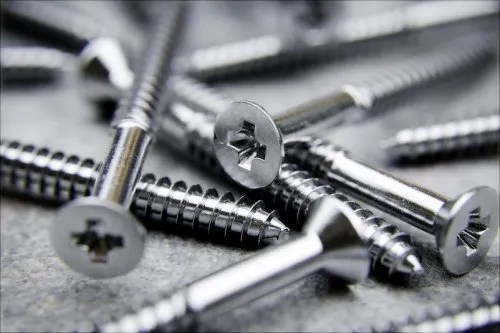The workhorse coating of the fastener industry. Electroplating involves immersion of the items to be coated in a solution containing metal ions and applying an electric current to uniformly coat the surface. Zinc is the most common metal surface plating, due to a good balance of galvanic corrosion protection and relatively low cost. However, a similar process can be used to coat steel fastener substrates with other metals (nickel, tin, etc.).
Its relatively low cost makes the zinc plating process the top choice for companies looking for affordable corrosion protection. The zinc acts as a sacrificial barrier coating that prevents oxidation of the underlying substrate. Addition corrosion protection can be achieved by applying organic top coats and passivation treatments to the zinc. While zinc plating yields a silvery-gray finish, the color can be altered through passivation. Zinc passivates may be yellow, black or clear blue, and the application of lacquers can provide a protective seal. Zinc plating can be used with virtually any type of metal, but is most frequently applied to iron or steel surfaces.
Coating characteristics: Zinc electroplated coatings are bright coatings that are thin - typically around 3-20 microns and are not suitable for exterior use where durability is required. A chromate conversion process is frequently applied to zinc plating to improve their durability.
Common Colors: Clear, Yellow, Black, Blue, Green, Red Thickness: 3-25 microns Chromate Valence: Available in hexavalent (Cr6) or trivalent (Cr3, RoHS compliant)
When to avoid Zinc plating? One drawback of plating with zinc is that zinc coatings do not hold up well against acids or alkalis. In these situations, powder, plastic or e-coat is a better option. Exposure to seawater can also limit zinc’s durability, making it a poor choice for desalination and other marine applications. The thickness of the zinc coating is often inconsistent and can vary significantly depending on the shape of the substrate.
